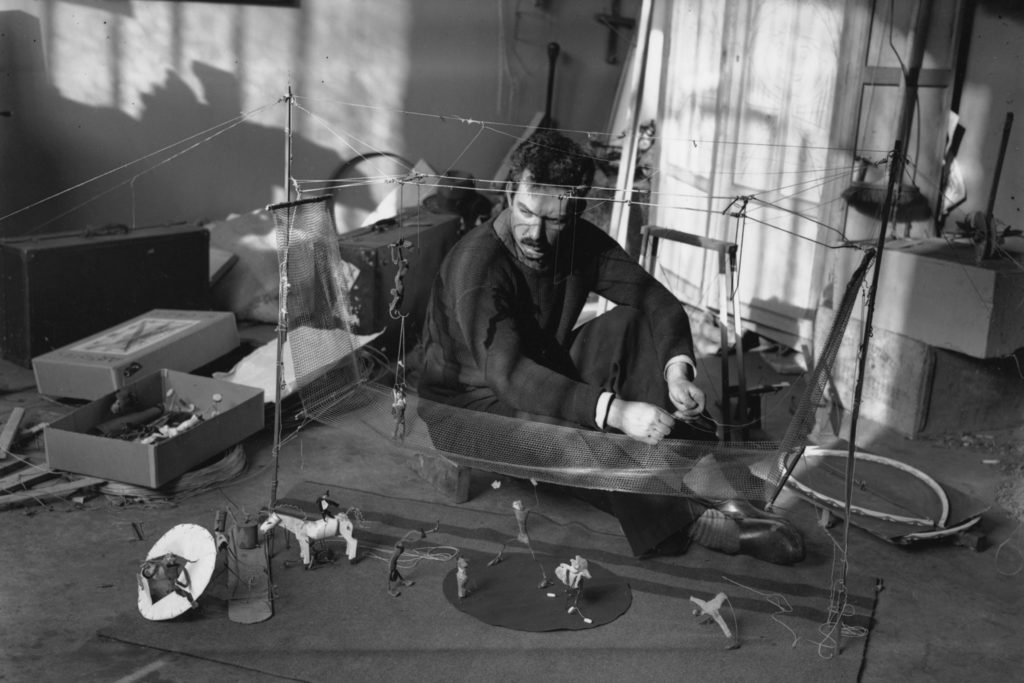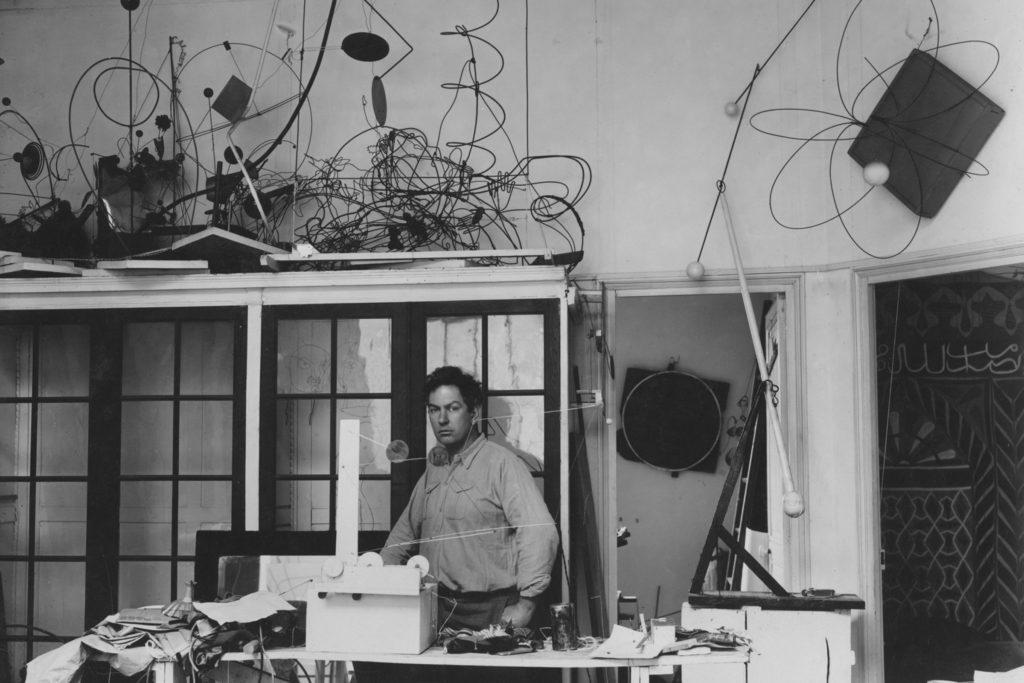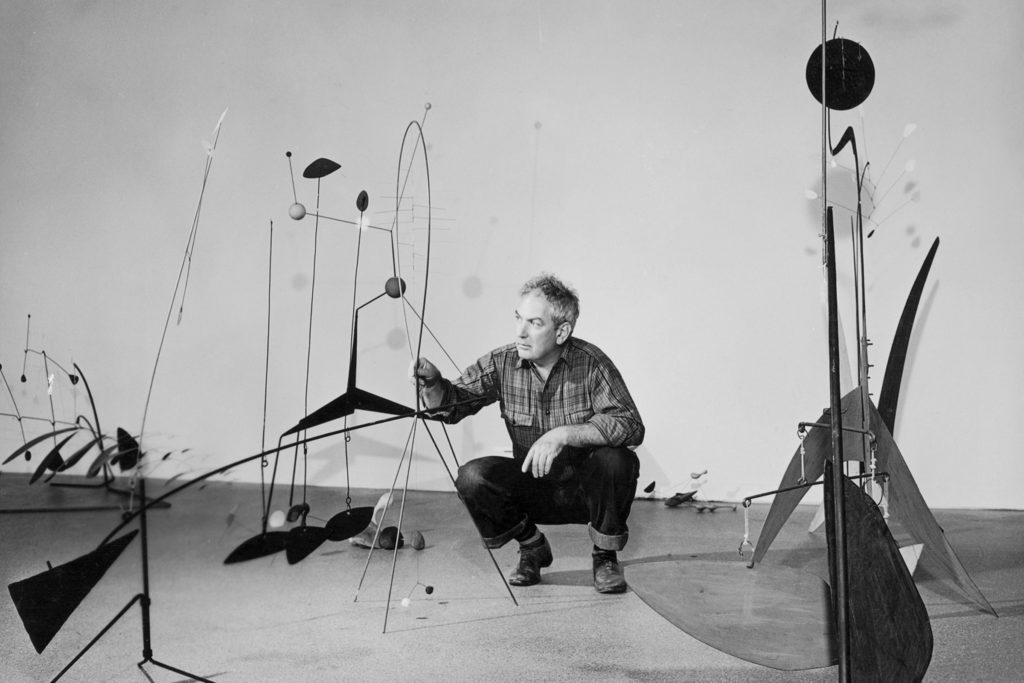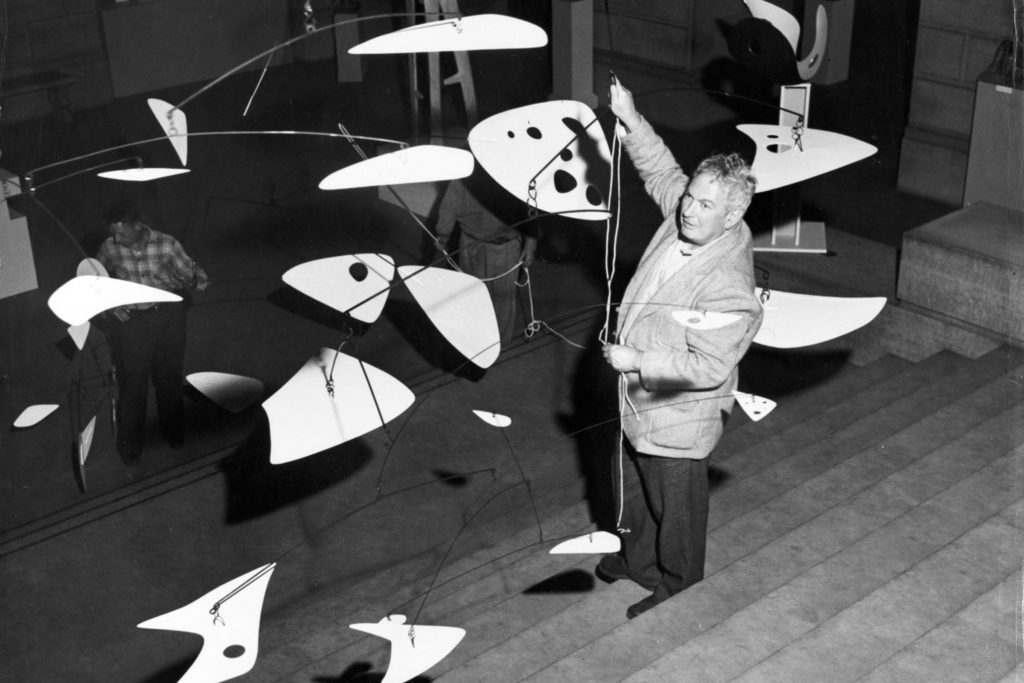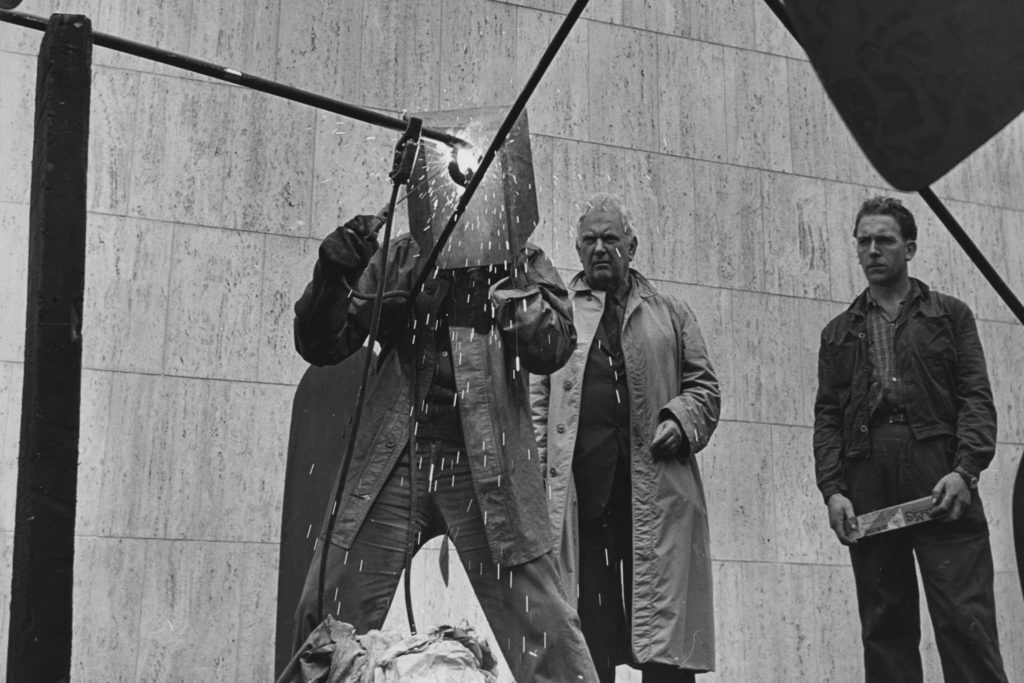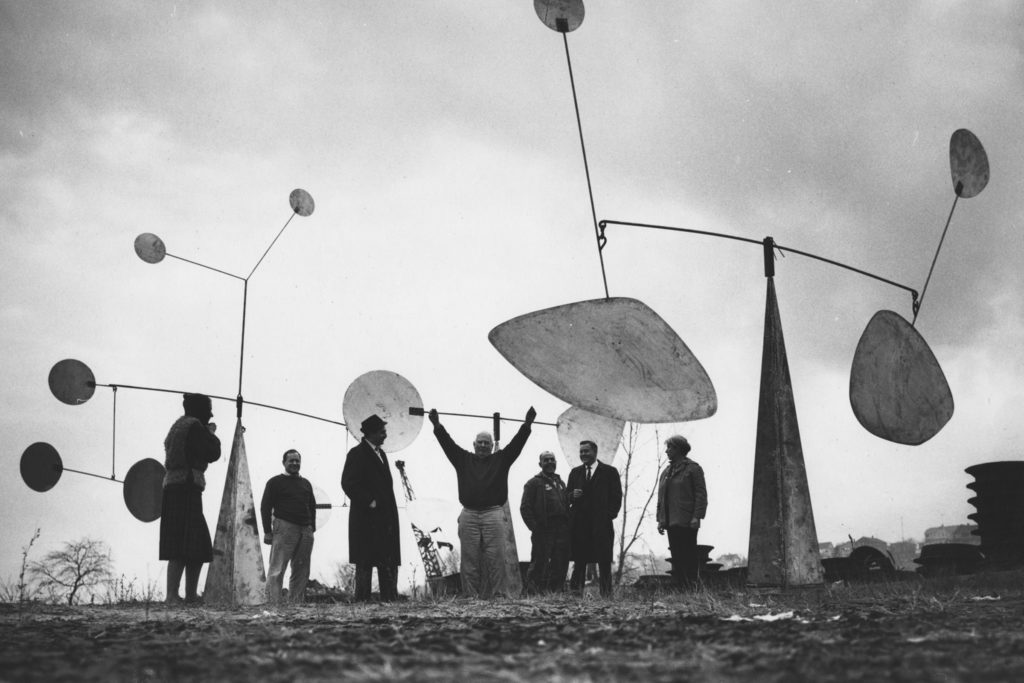Alexander Calder created works of art throughout his childhood. In his twenties, he moved to New York and studied at the Art Students League. He worked concurrently at the National Police Gazette, illustrating sporting events and the Ringling Bros. and Barnum & Bailey Circus, and he made hundreds of brush drawings of animals at the Bronx and Central Park zoos. During this period, he commonly used sheet metal and wire for other projects.
Soon after moving to Paris in 1926, Calder created his Cirque Calder. Made of wire and a spectrum of found materials, the Cirque was a work of performance art that gained Calder an introduction to the Parisian avant-garde. He continued to explore his invention of wire sculpture, whereby he “drew” with wire in three dimensions the portraits of friends, animals, circus themes, and personalities of the day.
Following a visit in October of 1930 to Piet Mondrian’s studio, where he was impressed by the environmental installation, Calder made his first wholly abstract compositions and invented the kinetic sculpture now known as the mobile. Coined for these works by Marcel Duchamp in 1931, the word “mobile” refers to both “motion” and “motive” in French. He also created stationary abstract works that Jean Arp dubbed “stabiles.”
In 1937, Calder completed Devil Fish, his first stabile enlarged from a model. He received two important commissions: Mercury Fountain (1937) and Lobster Trap and Fish Tail (1939). His first retrospective was held in 1938 at the George Walter Vincent Smith Gallery in Springfield, Massachusetts, followed by another in 1943 at the Museum of Modern Art in New York.
Calder had a major show in 1946 at Galerie Louis Carré in Paris for which Jean-Paul Sartre wrote a seminal essay. He designed sets and costumes for a number of theatrical performances and designed a huge acoustic ceiling for the Aula Magna auditorium at Universidad Central de Venezuela. In 1952, Calder represented the United States at the Venice Biennale, winning the grand prize for sculpture.
During a yearlong stay in Aix-en-Provence, Calder executed the first group of large-scale outdoor works and concurrently concentrated on painting gouaches. In 1954–55, he visited the Middle East, India, and South America, with trips to Paris in between, resulting in an astonishing output and range of work. Toward the late 1950s, Calder turned his attention to commissions both at home and abroad.
In 1963, Calder completed construction of a large studio overlooking the Indre Valley. With the assistance of a full-scale, industrial ironworks, he began to fabricate his monumental works in France and devoted much of his later working years to public commissions. Calder died in New York in 1976 at the age of seventy-eight.

